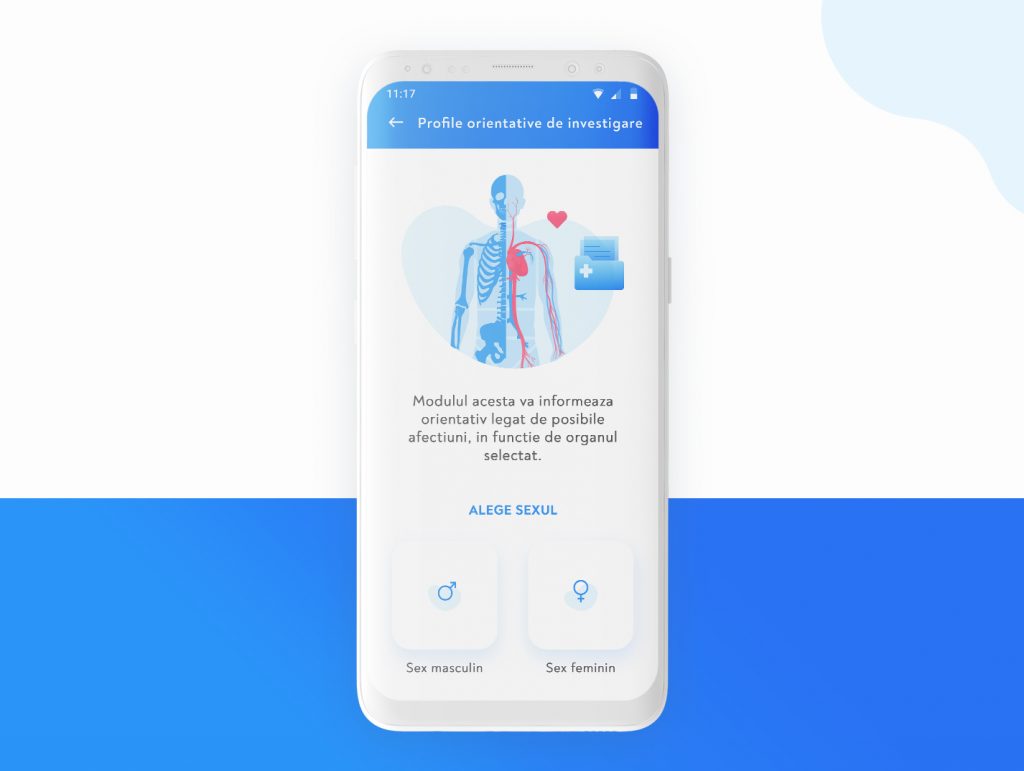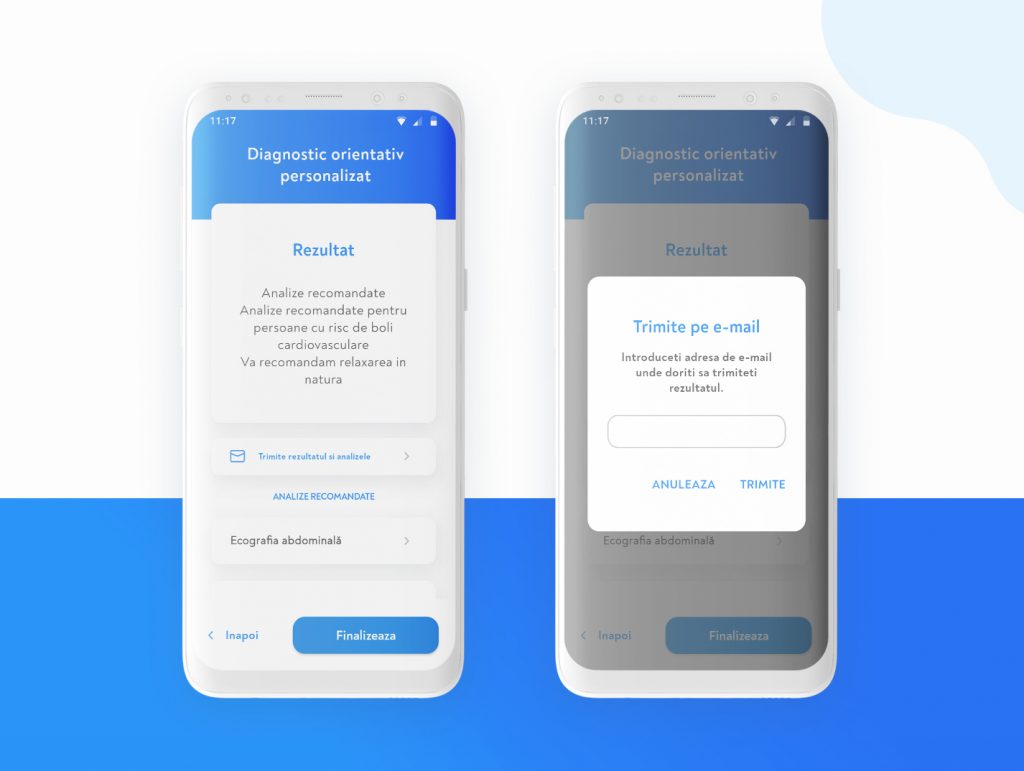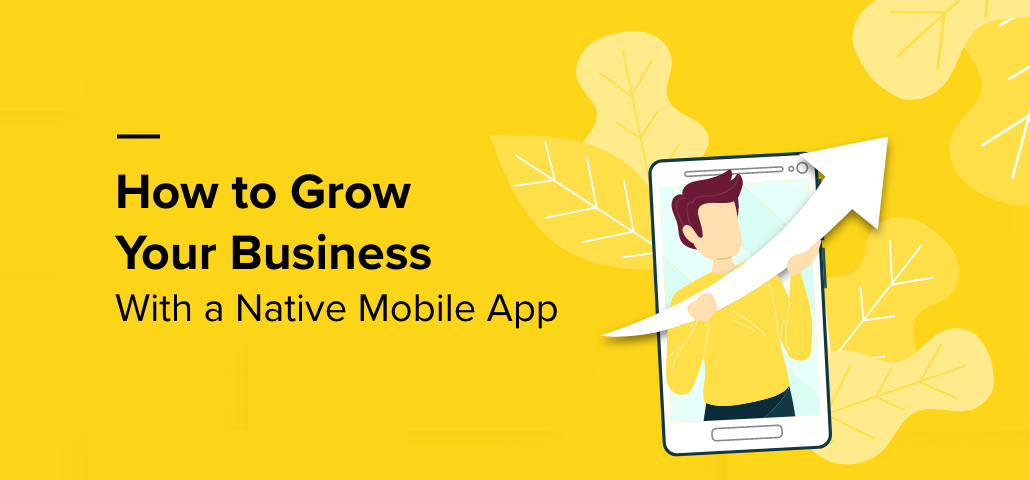The process and the cost of developing a Hospital App
2020 was the year that brought health issues to the top of everybody’s mind worldwide. People became more aware of how important it is to take basic hygiene measures to prevent illness, and to overall maintain a closer eye on their health.
Even governments mobilized themselves into action. For example, the CDC partnered up with Big Tech giants Apple and Google to implement contact tracing, a special kind of technology used to better combat the spread of the pandemic.
We’ve also seen a surge of downloads on health and fitness apps in 2020, as more and more people were forced to work out inside. This is a response to the ongoing trend of digitization, the health industry being just one of the most recent beneficiaries of it.
The mobile health industry (mHealth market) is estimated to reach $311.98 B by 2027, as more and more people and investors see the benefits of digitized healthcare.
Even the public sector saw the need to increase their digitization efforts in order to manage demand for remote solutions for citizens.
Healthcare apps are raising awareness

Medical app menu – Screenshot
Health apps manage to gather valuable information about the person. It is estimated that during their lifetime, a person can generate 1 million gigabytes of health-related data. This can provide literally life-saving information for patients as healthcare apps can and are starting to be integrated with hospital software.
Wearables also generate biometric data that can be interpreted to provide fast and correct diagnostics for patients, eliminating the risk of developing serious illness or even worse outcomes. The best part is that biometric data can contain larger data sets over a prolonged period of time, which can better prepare the case for a specific diagnosis.
Healthcare apps can also provide health forecasts for the future. By gathering and analyzing various biometric data, such as sleep patterns, heart rate, stress levels, and others, medical apps are able to project health states in the future, while also being able to provide solutions for behavior change and others.
Hospital app development process
One of the previously mentioned public efforts has been undertaken by one of our local hospitals based in Oradea, Romania. The Emergency County Hospital Oradea (herein known as ECHO) is known to embrace modernization, recently inaugurating one of the most modern ER sections in Romania.
ECHO’s staff observed the increase of people asking for quick, reliable diagnosis and responses to the different symptoms they felt. Since a professional diagnosis takes time and visits to the doctor, and cannot be easily scaled, we chipped in and provided an easy and intuitive solution for these requests.
Any software (and implicitly this healthcare app) that is done for public institutions here in Romania, needs to be tracked and won in an auction through the electronic public procurement system (herein known as EPPS).
After the legal proceedings were done, we got to work on the actual hospital app. The purpose of the medical app was to provide reliable information to patients by professional doctors.
More and more people turn to Google for a diagnosis. Although googling a migraine or cold symptoms might give you some relevant answers, there’s a big chance you’ll end up going down a rabbit hole of hypochondria-laden information and a trip to the nearest hospital.
‘Health anxiety’ is a common effect of googling your symptoms, and it’s something that doctors need to battle more frequently in recent times, thanks to the ubiquity of search engines.
One of the reasons for the hospital app we developed was to provide an answer to such pressing public health needs. We’ll go over the process of elaborating the application down below.
- Finding out the needs
At this stage, generally, the business analyst sits down with the product owner (in this case, ECHO), and starts analyzing the issue to come up with a solution. Since the problem of people and patients erroneously searching for symptoms and cures online was something they were being confronted with, a solution had to be found.
Other needs included providing a phone app to patients, a platform for future development that can have features such as appointment scheduling, analysis reports, and others.
These needs were gathered and used as a starting point in order to think through what the solution would be.
- Coming up with a plan
It’s important to note here that the app wasn’t designed to be available only to the current patients of the hospital, but for everybody willing to have access to reliable medical information.
With the problems and the issues in hand, we got to work on a specifications document that contained all the features and the functionalities of the medical app. Since we wanted to have the biggest reach we can on mobile devices, we decided to develop the app for iOS and Android.
The application would contain two main modules, that seek to answer the following issues:
- Patients should have some way of accessing reliable and professional information on a variety of issues, illnesses, and diseases, starting from an organ of choice
- Patients should get indicative (although not official) diagnosis based on the answers they provide to questions designed by the medical staff

Indicative Self Diagnosis
For the first need, the app would provide the users with a model of the human body as a place to start getting the information. By going to specific organs, they would get a list of all the various possible illnesses of that specific organ. For each illness, the patients would get useful, reliable, and professional information on the subject.

Model of Human Body
It’s important to note here that a useful demarcation is used in the app to separate regular organs from, for example, the skeletal system or the circulatory system, as these are relatively separate categories of body elements. (As a side note, a future enhancement of this feature would probably entail a way to schedule an appointment at the end with the hospital so a professional medical staff could properly analyze the ailing patient.)

Selecting Particular Body Elements
For the second need, the application would provide the users with a questionnaire set up by the professional medical staff in order to approximately (and unofficially) gauge the health situation of the patient. Factors such as BMI, if the patient smokes or drinks, the degree of exercise, and other important health markers are taken into consideration.

Medical Questionnaire
The medical staff would be able to configure specific questions and answers on which to provide a set of verdicts and medical tests suggestions at the end of the questionnaire. The great thing is that patients are able to send these questionnaire results to their e-mail address and practically save them for future reference.

Questionnaire results
After deciding on the main modules, and with the specifications in hand, the designers and the developers managed to bring to life the application and make it ready to be launched on the app stores.
Although this health app successfully fulfills the initial needs of the hospital, further enhancements can be added to it to the benefit of the medical staff and of the patients’. We will go over some additional features that can benefit not only this hospital app but any healthcare app.
Further implementation possibilities
A hospital app can be as complex as any other app, and certainly even more complex than the one we developed for the ECHO hospital. As a rule, if a client doesn’t have an explicit set of needs or a complex one, we usually start with the most important problem and try to develop an MVP (minimum viable product) and try to ship the product out as quickly as possible on the market, to basically get a concept validation as fast as we can.
With a hospital app, the needs of a hospital may differ a lot. For the medical app, we developed for ECHO, the needs and the problems were relatively straightforward. Of course, this opens up the possibility of further development to a whole array of functionalities, which we will go over in the following section.
Before we do that though, it’s important to stress the importance of handling patient data. Patient data privacy is generally enforced in most countries, through acts such as HITECH (in the USA) and the 2016/679 regulation (in EU).
These provide patients, doctors, and other third parties handling sensitive health data with safety measures and regulations to avoid data leaks or the mishandling of data.
Hospital apps need to be extra careful and take into account protective security measures to provide patient data leaks and to comply with the data regulations in their specific countries.
With these regulations out of the way, let’s go over some of the possible further implementations of the hospital app (or of any medical app in general).
Geolocation and patient tracking
With geolocation, patients in need can quickly find the fastest route to the hospital. The hospital app can provide a map with directions and useful information for patients to quickly find their way to the nearest care center.
Moreover, in case of patients are in need of an emergency, or they have regular visits by medical staff or nurses for treatment, the medical staff can quickly find the best and fastest path to reach the patient in no-time. These technologies make sure that tragedies get minimized and patient care is properly handled.
Physiotherapy recovery features
Physiotherapy can be a hard and difficult process for patients, especially for those that are not in the proper shape to go to the hospital or a clinic for recovery sessions. Not to mention those who do not have a loved one or someone else who can drive them to the hospital.
Of course, in cases like these generally medical staff get dispatched to the patient’s home. Fortunately for everybody involved, the advancement of sensors can help put a spin on this whole endeavor.
For example, with the help of sensors strategically placed on the ailing limb or zone, a hospital app can communicate with the sensors and display the exact movements of the limb. The medical app can then display live feedback of the patient’s movement on the screen of the device and help the patient guide the movement to the correct one.
This technology can provide a proxy for the recovery of patients, in that they don’t need to physically go to a clinic, and physiotherapists can also check the progress of a patient and also provide advice based on results, especially with the help of the next feature.
Live consultancy or telehealth
Telehealth is an ongoing healthcare trend that any hospital app can implement, and it refers to live or pre-recorded consultancy videos and chats with professionally trained medical staff.
This technology comes especially useful now with the pandemic, but it is also useful irrespective of current events, especially for people who cannot (easily) go to a hospital or a clinic to get a checkup. Of course, there are certain limitations that a hospital app cannot cover, such as having a doctor check your blood pressure or glycemic index.
Pharmacy integration
A hospital app can integrate with partner pharmacies to provide useful discounts for patients. They can even integrate gamification techniques. For example, if patients take their medicine on time (being reminded by the hospital app) and diligently mark the entries in the app, then they can receive discounts for specific drugs.
This can also help patients pick a specific pharmacy as their go-to drugstore of choice since it provides them with financial incentives to choose them.
Emergency triggers
The hospital app can provide a variety of configurations for patients (especially those situated in the higher risk category). For example, the hospital app can automatically inform the hospital staff when a patient needs dialysis.
Or, the patient can ask in the hospital app for an emergency visit by trained professionals, or if they cannot get out of the bed. And for this, if the hospital app has the geolocation and patient tracking feature mentioned above, then the medical staff can always quickly find the route to the patient.
Cost
A typical hospital app can range cost-wise from $15,000 to around $50,000 per platform if you decide to go native (iOS and Android). Depending on the number of features, the complexity, the integration with existing systems, and the technology used, the cost can vary.
Let’s say that you don’t need to integrate the app with legacy and (often) convoluted existing hospital management system software. Then, a good solution might be to go the hybrid way, which might reduce the costs of developing the app with 20%. Yes, that means 20% off the whole development cost, while getting the app for both iOS and Android (through hybrid technologies such as React Native).
Plus, you should also take into account that depending on the nature of the hospital app and what problems it looks to solve, you might need proper market analysis and strategy. Things like market research, user persona research, concept validation, market fit and others.
Which can easily ramp up the price and take around 10%-20% of the total costs of the project. Although not necessarily a significant chunk, it does provide the basis for creating the right hospital app for the right market. Think of it as the snowball that starts the avalanche. If done properly, they can save a lot of headaches (no pun intended) down the line.
All in all, like we previously said, the costs of a hospital app can range between $15,000 to around $50,000, but things can easily increase or decrease depending on the needs that have to be met, the technology used and preliminary processes such as ideation, analysis and strategy.
Conclusion
Because the mHealth industry is booming, and with the current pandemic, more and more health officials are starting to see the benefit of digitizing the medical processes, as much as they can. They can reach patients faster, check their health progress, and be prepared to reach them at a moment’s notice when needed. Hospital apps can forever disrupt how healthcare is done, for the better.



